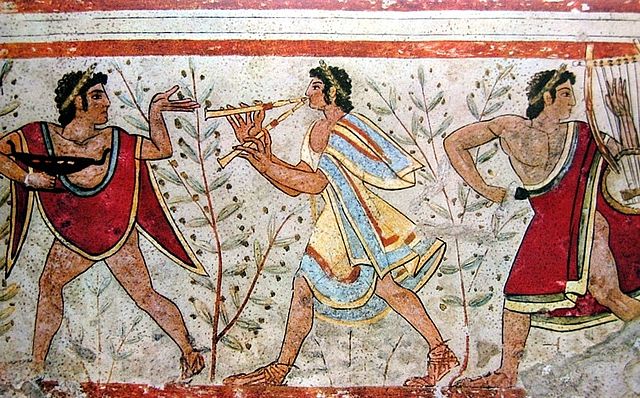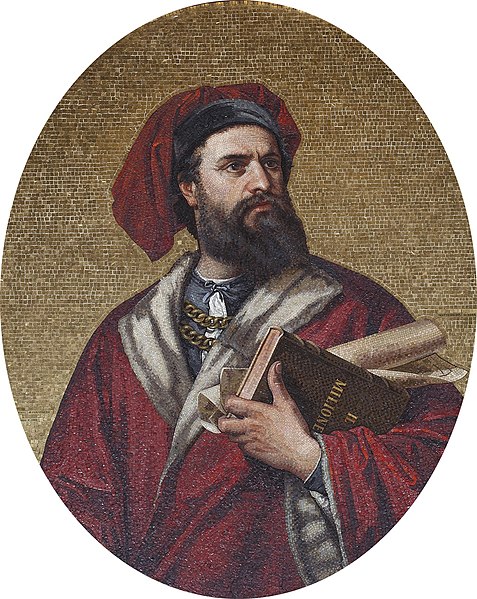Italian literature is written in the Italian language, particularly within Italy. It may also refer to literature written by Italians or in other languages spoken in Italy, often languages that are closely related to modern Italian, including regional varieties and vernacular dialects.
Medieval and Renaissance Italian writers portrayed by Giorgio Vasari in Six Tuscan Poets (1544). From left to right: Cristoforo Landino, Marsilio Ficino, Francesco Petrarca, Giovanni Boccaccio, Dante Alighieri, and Guido Cavalcanti.
A depiction of Boethius teaching his students (1385). Boethius, a 6th-century Christian philosopher, helped keep alive the classic tradition in post-Roman Italy.
Sordello from a 13th-century manuscript
Jacobus de Voragine with the Golden Legend in his hand, fresco by Ottaviano Nelli, chapel of Trinci Palace, Foligno, Italy
Italy, officially the Italian Republic, is a country in Southern and Western Europe. It is located on a peninsula that extends into the middle of the Mediterranean Sea, with the Alps on its northern land border, as well as several islands, notably Sicily and Sardinia. Italy shares its borders with France, Switzerland, Austria, Slovenia and two enclaves: Vatican City and San Marino. Its territory also includes Campione and the Pelagie Islands. It is the tenth-largest country by land area in the European continent, covering an area of 301,340 km2 (116,350 sq mi), and the third-most populous member state of the European Union, with a population of nearly 60 million. Its capital and largest city is Rome; other major urban areas include Milan, Lombardy, Naples, Turin, Florence, and Venice.
Etruscan fresco in the Monterozzi necropolis, 5th century BC
The Colosseum in Rome, built c. 70–80 AD, is considered one of the greatest works of architecture and engineering of ancient history.
Marco Polo, 13th-century explorer
Leonardo da Vinci, the quintessential Renaissance man, in a self-portrait (ca. 1512, Royal Library, Turin)








